If you’re looking for a nourishing, hearty soup to keep you warm through the colder months, then this root vegetable barley soup has you covered. It’s made with carrots, parsnips, and celery root, all of which are simmered in a savory, tomato-based broth. Barley adds a nice texture, as well as fiber, magnesium, and iron, to the wholesome mix.
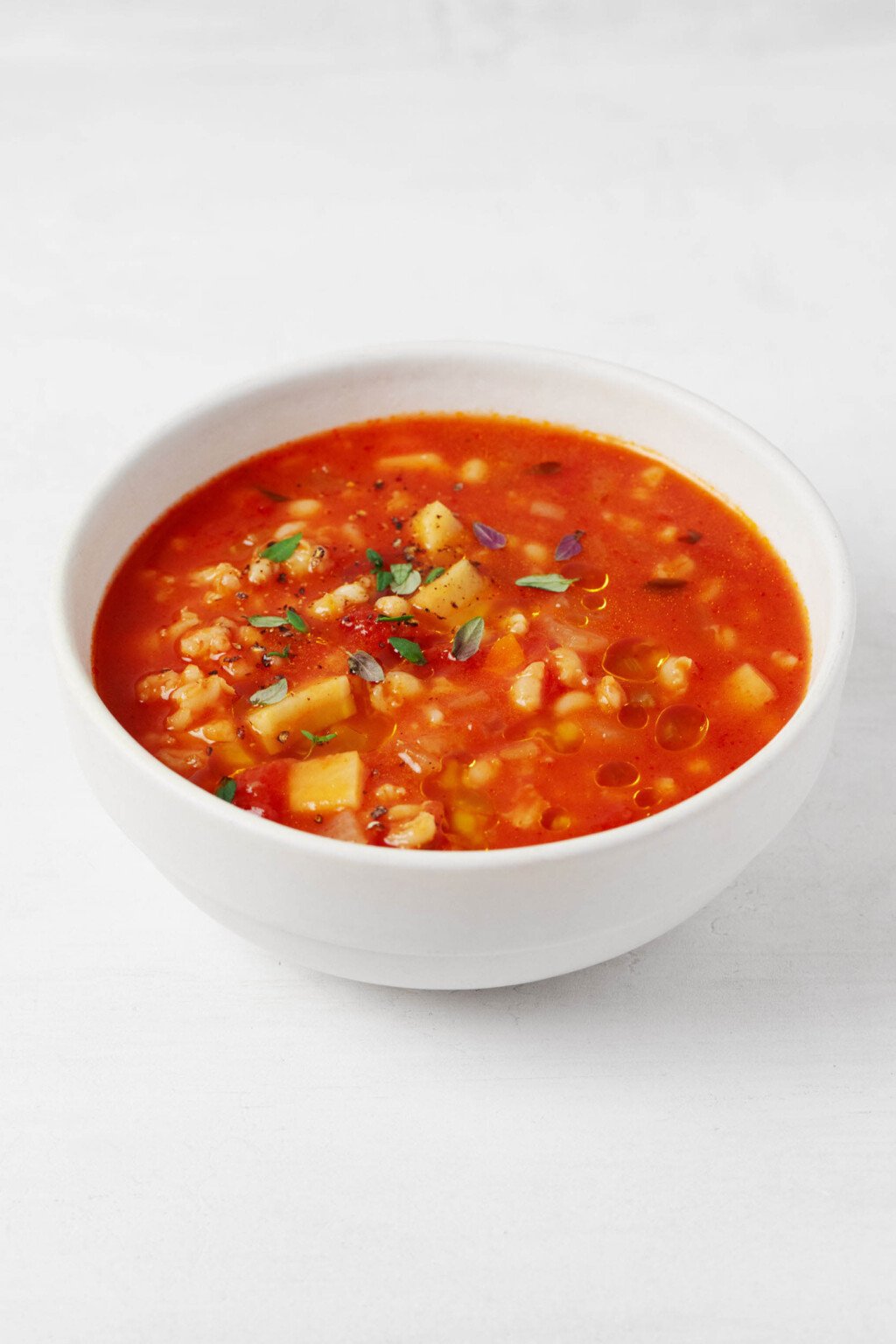
There’s a good chance that, at some point in time, you’ve had a bowl of mushroom barley soup. If you have, then you know that barley’s plump, chewy texture is so pleasant in a warm and brothy bowl.
I’ve got a different version of barley soup to share with you today. It’s a little more unusual, but no less delicious, than the version made with mushrooms.
Root vegetable barley soup is the epitome of all things grounding and fortifying for winter and fall.
In theory, the combination of nutty barley and root vegetables might be almost too earthy. Yet a bright, tomato-based broth, which has just the right amount of acidity, keeps this soup lively and lifted.
I first made the soup as part of a “cook the pantry” effort. I was (and still am) trying to make my way through more than a pound of barley.
The soup is more than a convenient recipe for using up leftover barley, though. It’s really tasty and special, and I know that it’ll be a favorite this season and in seasons to come.
The many benefits of barley
I have to admit that I don’t cook with barley often enough, hence the surplus that I just mentioned having at home.
But I should. Each time I put cooked barley into a salad or make a quick and easy barley “risotto,” I’m reminded of how much I love its round grains, with their springy texture.
In addition to being tasty and versatile, barley is also nutrient-dense. Like most whole grains, it’s rich in fiber. And the fiber in barley happens to be soluble fiber, which is typically regulating and therapeutic for those with IBS or sensitive digestive systems.
Barley, like many whole forms of wheat, also has a decent amount of protein: about five or six grams per cooked cup.
Barley is an excellent source of magnesium, an electrolyte that plays numerous important roles in health and well-being. Magnesium aids in maintaining hydration status and bone health, and it’s also important for the nervous system.
Finally, barley is a good plant-based source of iron.
I’ve written about this mineral in the past; it’s especially important for vegans and vegetarians to pay attention to their iron intake, as red meat is one of the most concentrated food sources.
Beans, lentils, and dark leafy greens are really good sources of plant-based iron. Consuming iron-rich foods with Vitamin C can be helpful with iron status, too.
A number of whole grains also provide iron, and barley is one of them. A cup of cooked barley contains over 10% of the recommended daily allowance of iron for an adult female.
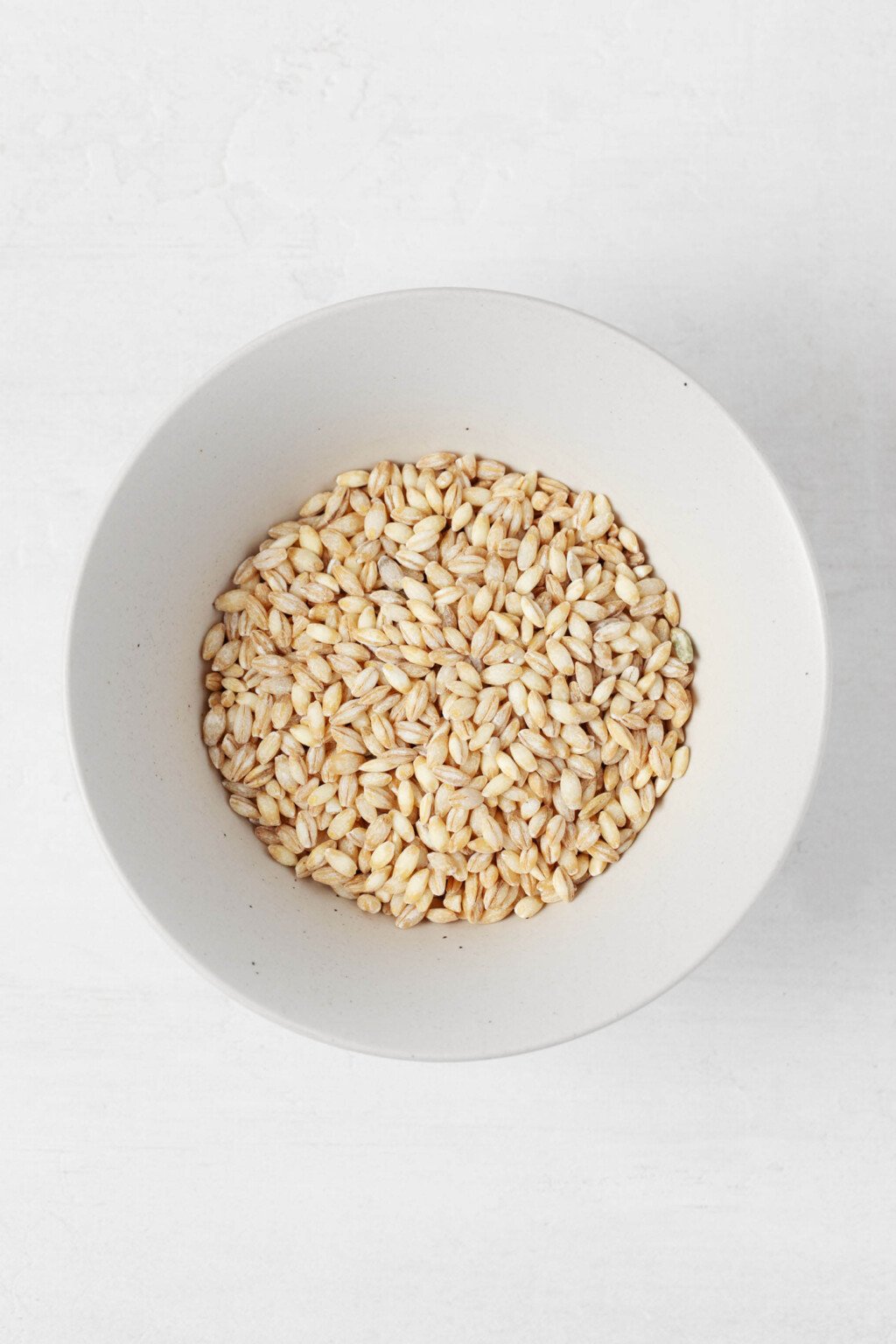
Pearl vs hulled barley
Most barley is sold in one of two forms: pearl or hulled.
In the case of hulled barley, only the outer husk has been removed from the original grain. In order to make pearl barley, both the husk and the bran of the grain are removed.
As a result, pearl barley cooks more quickly—in about twenty-five minutes, rather than forty-five—and I think it has a more pleasant texture than hulled.
Theoretically, the downside of choosing pearl barley is that it has a little less fiber, and possibly less micronutrient content, than hulled. This is because the bran of the grain is inherently nutritious.
In practice, the difference between these two forms of the grain isn’t all that significant.
In fact, depending on which brand you buy, pearl and hulled barley varieties might have equal amounts of fiber. Even if there’s a small difference, barley in all of its forms is still a relatively high-fiber food.
As a registered dietitian, I feel strongly about keeping the big picture in mind. I know that fifteen minutes of extra cooking time can be meaningful to a busy or tired home cook. Choose the variety of grain that’s best for you!
Is barley gluten-free?
No, barley is a gluten-containing grain.
If you need to modify the soup to suit a gluten-free or wheat-free diet, then I recommend substituting the barley with short grain brown rice and simmering it for at least forty minutes.
What are root vegetables, exactly?
This may seem like a ridiculous question for a cookbook author to ask.
But a few years ago, I incorrectly titled what I now know to be an “autumn vegetable bake” as a “root vegetable bake,” which forced me to brush up on the topic.
Here are some popular root vegetables:
- Carrot
- Rutabaga
- Celeriac (celery root)
- Turnip
- Parsnip
- Sweet potato
- Yam
- Daikon radish
- Cassava
- Yuca
- Radish
Onions and garlic belong in the category of “modified stem” plants, but they’re often categorized with “true root” vegetables, too.
For my root vegetable barley soup, I use carrots, parsnips, and celeriac, as well as onions and garlic.
If you can’t find these veggies or don’t care for them, you can make reasonable substitutions within the root vegetable family.
And, though it’s not a root vegetable, butternut squash would be a nice alternative to the celeriac, carrot, or parsnip.
What I love about using root in the barley soup is that they add a little sweetness, along with savory notes. This soup has more flavor complexity than you might immediately guess.
How to make root vegetable barley soup
This is one of those one-pot recipes that makes preparing soup or stew such a treat.
Step 1: Sauté the vegetables
You’ll start the soup by sautéing all of its vegetables—not just the onion, celery, and carrot, but the parsnip and celeriac as well—in olive oil.
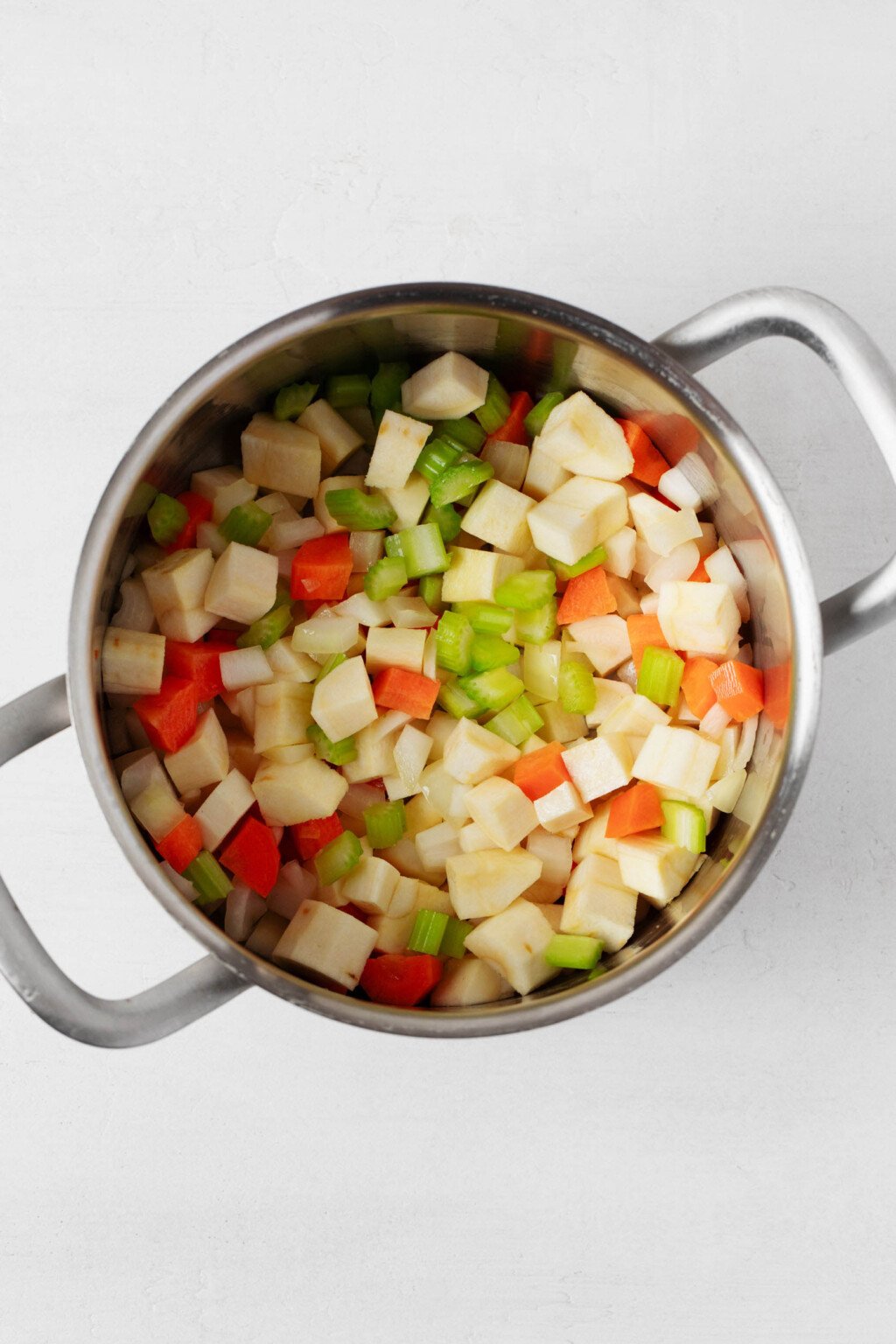
Once the onions are translucent and the carrots have become tender, you can add the garlic, sauté everything a little more, and move on.
Step 2: Add almost everything else to the pot and simmer away
Next, add nearly all of the remaining ingredients—the barley, tomatoes, broth, and some thyme—to the pot.
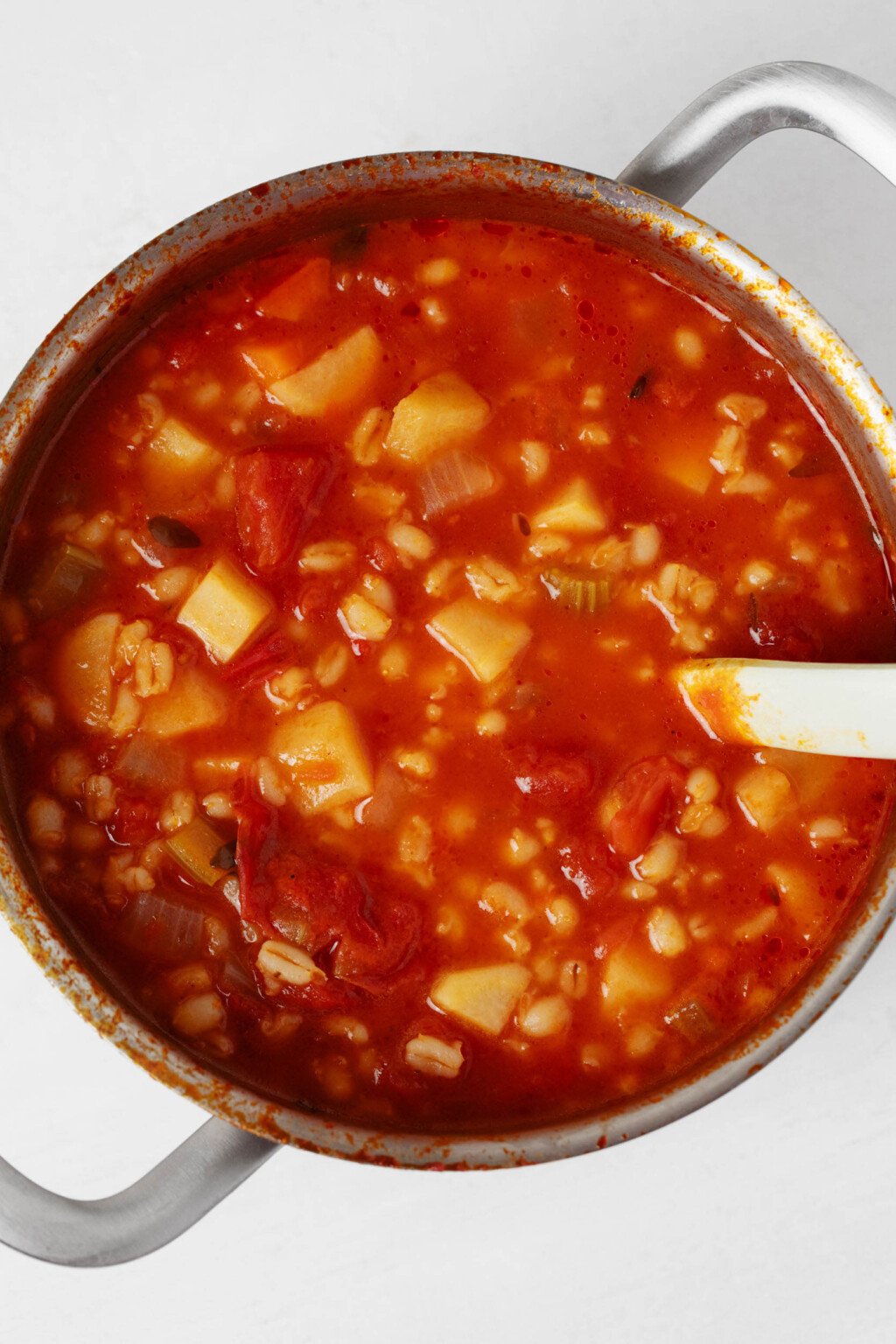
Bring the mixture to a boil, then turn the heat to low. Cover and simmer everything for thirty minutes if using pearl barley, forty to forty-five if using hulled.
Once the barley is tender, yet still has some chew, the soup is ready.
Step 3: Season and serve
Finally, taste the soup.
Depending on what brand of broth and crushed tomatoes you’ve used, the soup may need some extra salt, and it may not.
Add as much freshly ground black pepper as you like.
And finally, I like to stir just a small splash of white balsamic vinegar into the soup, in order to amplify sweetness and acidity.
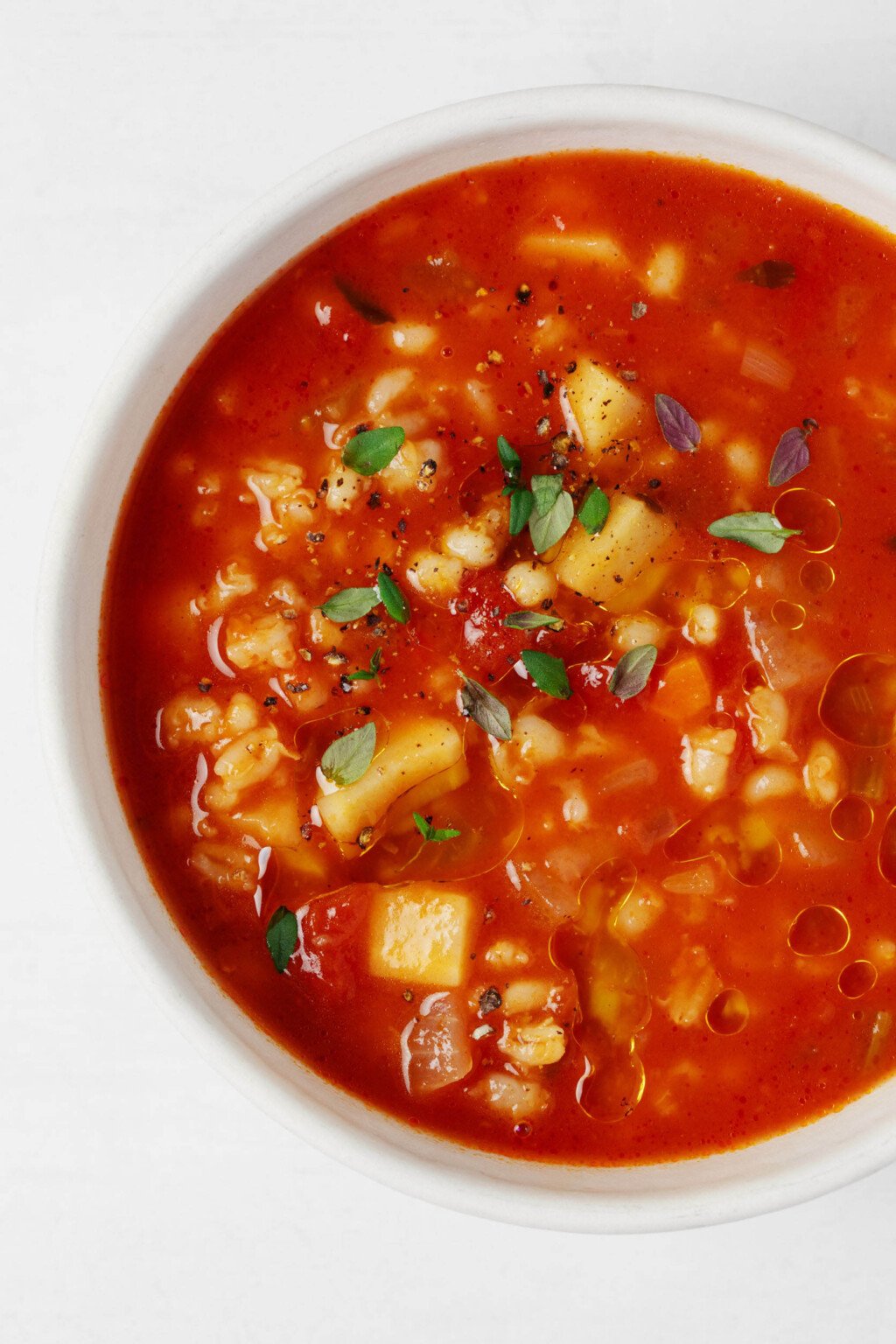
At this point, you can go ahead and serve the root vegetable barley soup. A finishing drizzle of olive oil or a few leaves of fresh thyme (or parsley) are a nice touch for your bowl.
I like to have the soup with a simple salad, like my butter lettuce side salad or Brussels sprout kale salad.
However, a heartier, autumnal salad, like my winter panzanella, kale salad with cranberries, lentils, and coconut “bacon,” or perfect winter chopped salad, would also be nice alongside.
Toast triangles, croutons, and crackers are all nice for some added crunch, too.
Meal prep and storage
This couldn’t be a better dish for meal prep and make-ahead cooking. Once prepared, the soup can be stored in an airtight container in the fridge for up to six days or frozen for up to eight weeks.
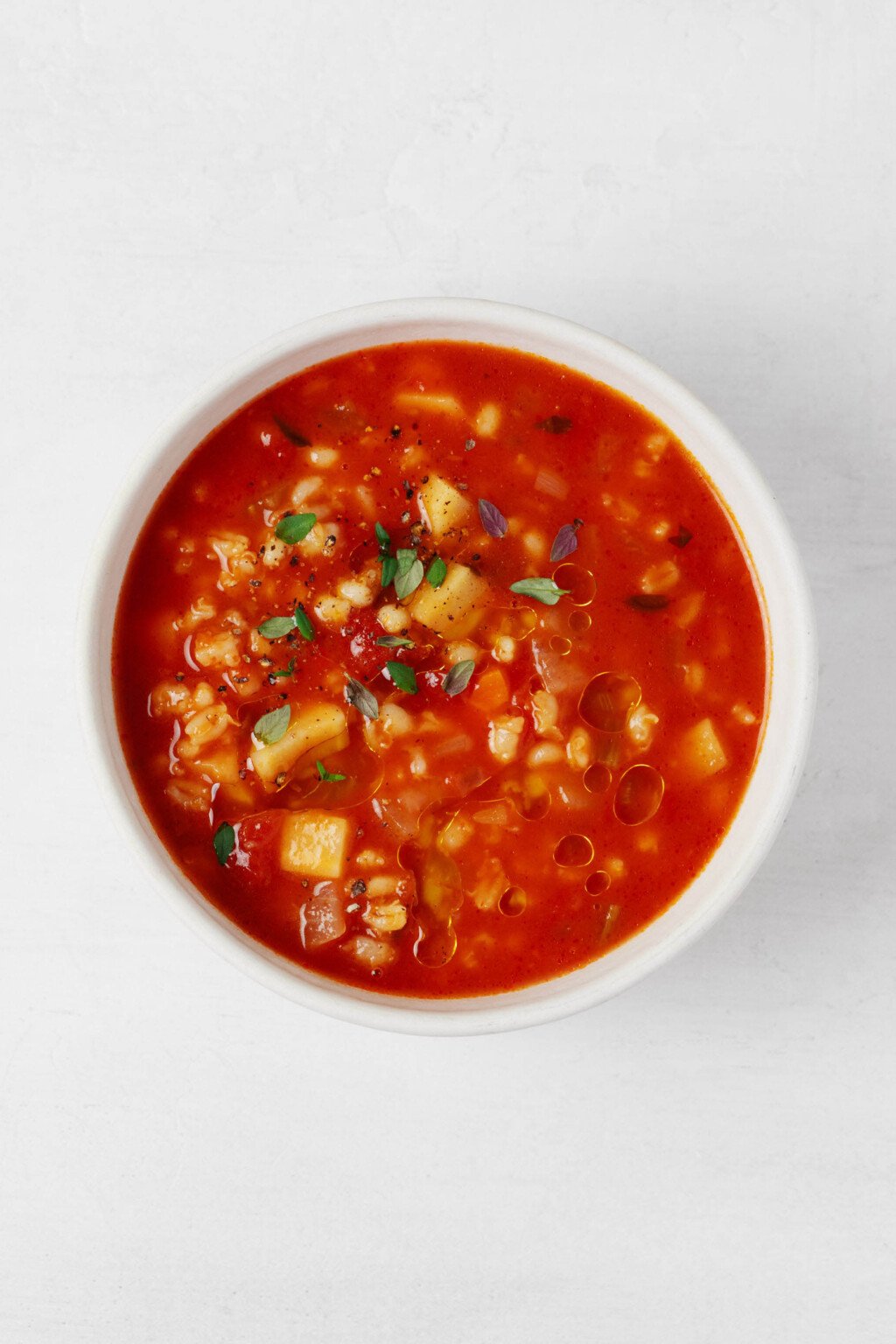

Root Vegetable Barley Soup (Vegan)
Equipment
Ingredients
- 2 tablespoons olive oil (plus extra for serving, if desired)
- 1 large yellow onion, diced
- 2 stalks celery, trimmed and diced
- 2 large or 3 small carrots, trimmed, scrubbed or peeled, and diced
- 2 large or 3 small parsnips, trimmed, scrubbed or peeled, and diced
- 1 turnip or celery root, peeled and diced
- 2 cloves garlic, minced
- 1 cup dry pearl barley (180g; substitute farro or short-grain brown rice)
- 3 cups crushed tomatoes (1 28-ounce / 850g can)
- 7-8 cups vegetable broth (1.65-1.9L)
- 2 teaspoons fresh thyme leaves or 1 teaspoon dried thyme
- Salt
- Freshly ground black pepper
- White balsamic vinegar (optional, to taste)
Instructions
-
Heat the olive oil in a large, heavy-bottomed pan over medium heat. Add the chopped vegetables. Sauté the vegetables for ten minutes, or until the onions are translucent and the carrots are becoming tender. Stir in the garlic and sauté for another minute.
-
Add the barley, crushed tomatoes, broth, and thyme to the pot. Bring the mixture to a boil, then turn the heat to low. Cover the pot and simmer for 30 minutes.
-
Stir the white balsamic vinegar into the soup. Taste and add salt and freshly ground pepper as needed; the amount of salt necessary will depend on the broth that you’ve used. Serve the soup with an additional drizzle of olive oil or a few leaves of fresh herbs, if you like. Enjoy.
Video
Notes
With all of the holiday commotion of November and December, it’s so nice to prepare a dish that’s simple, homey, and humble, yet an absolute delight to eat.
This vegetable barley soup is a perfect example. I hope you’ll find some comfort in it soon.
xo
The post Root Vegetable Barley Soup appeared first on The Full Helping.